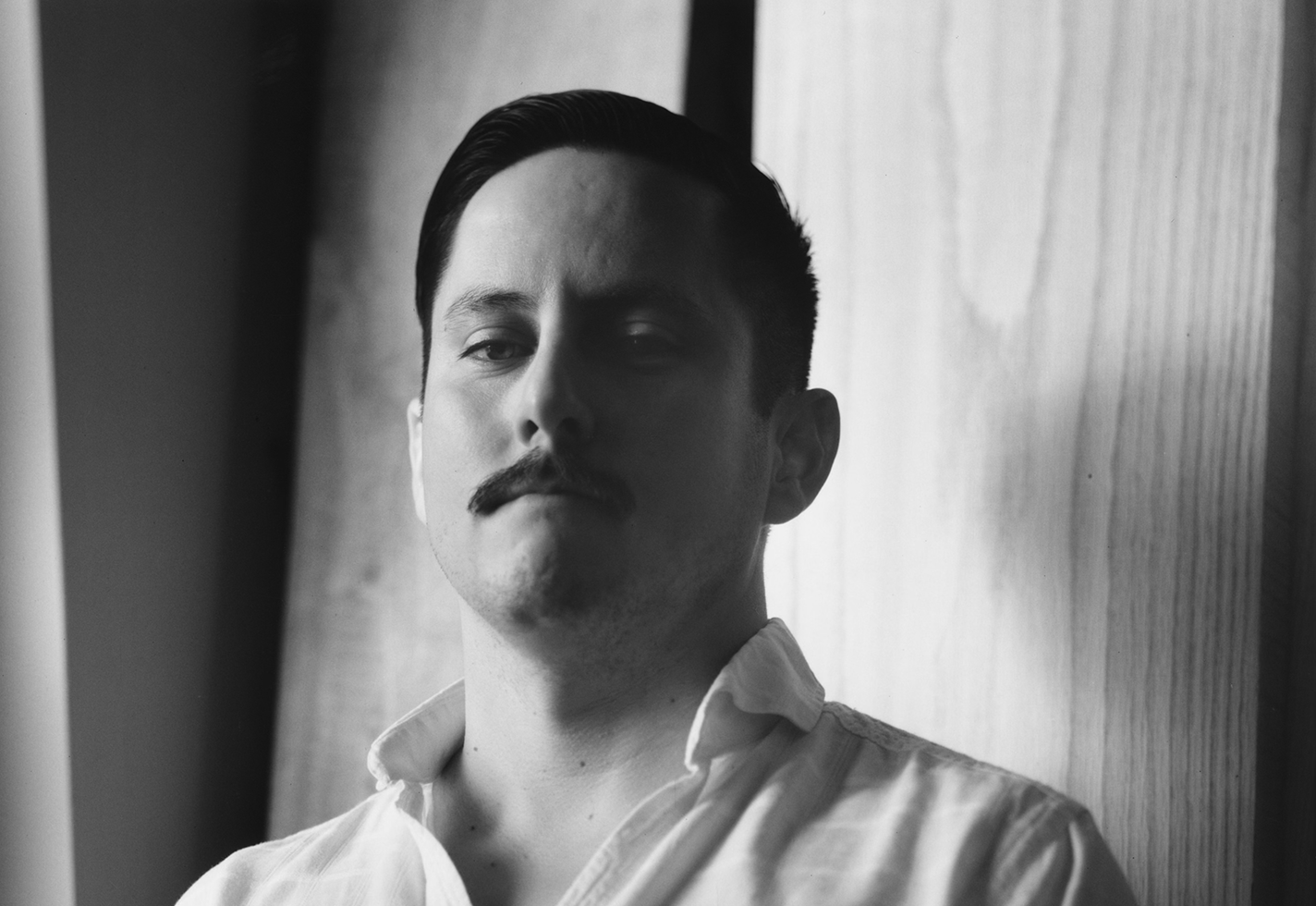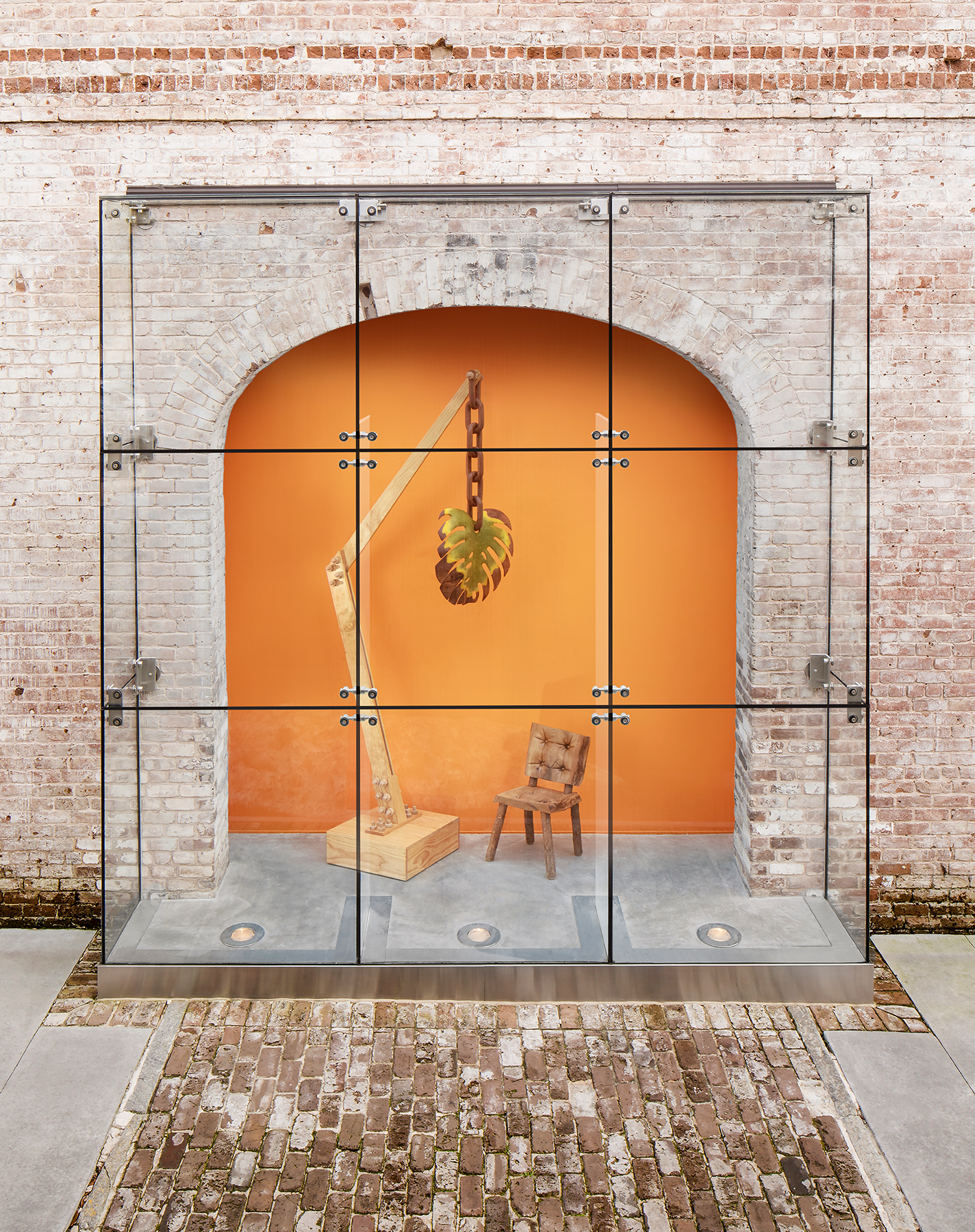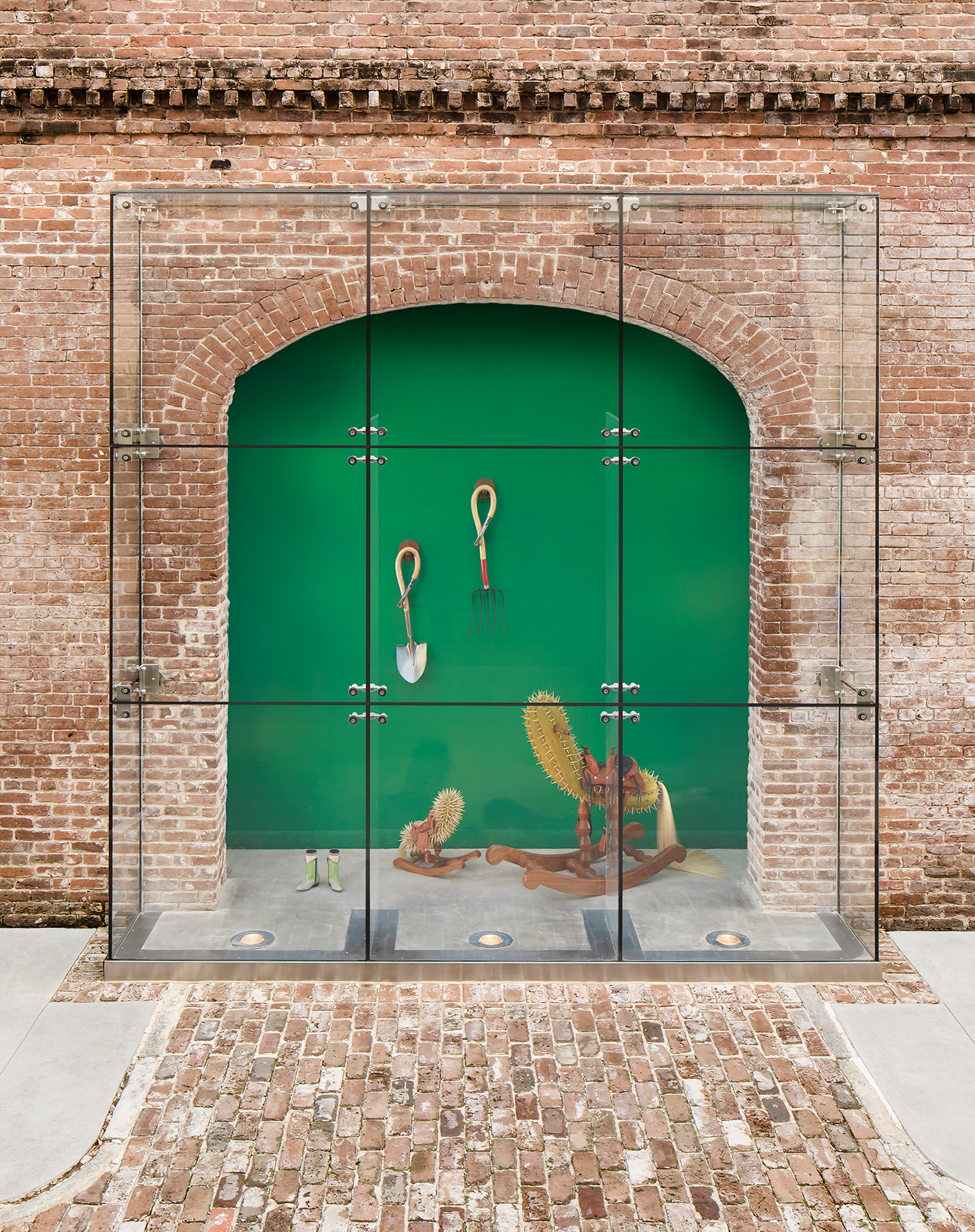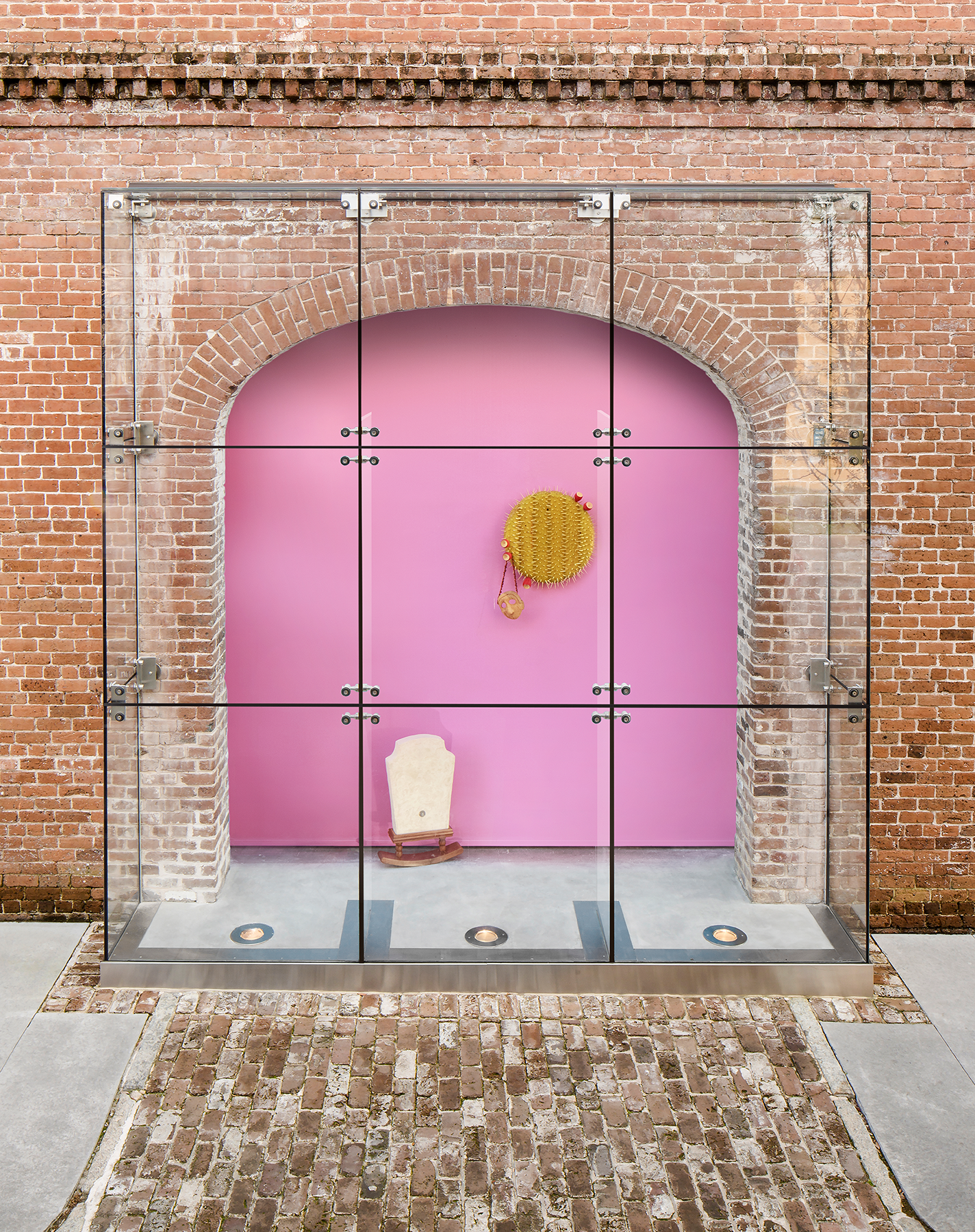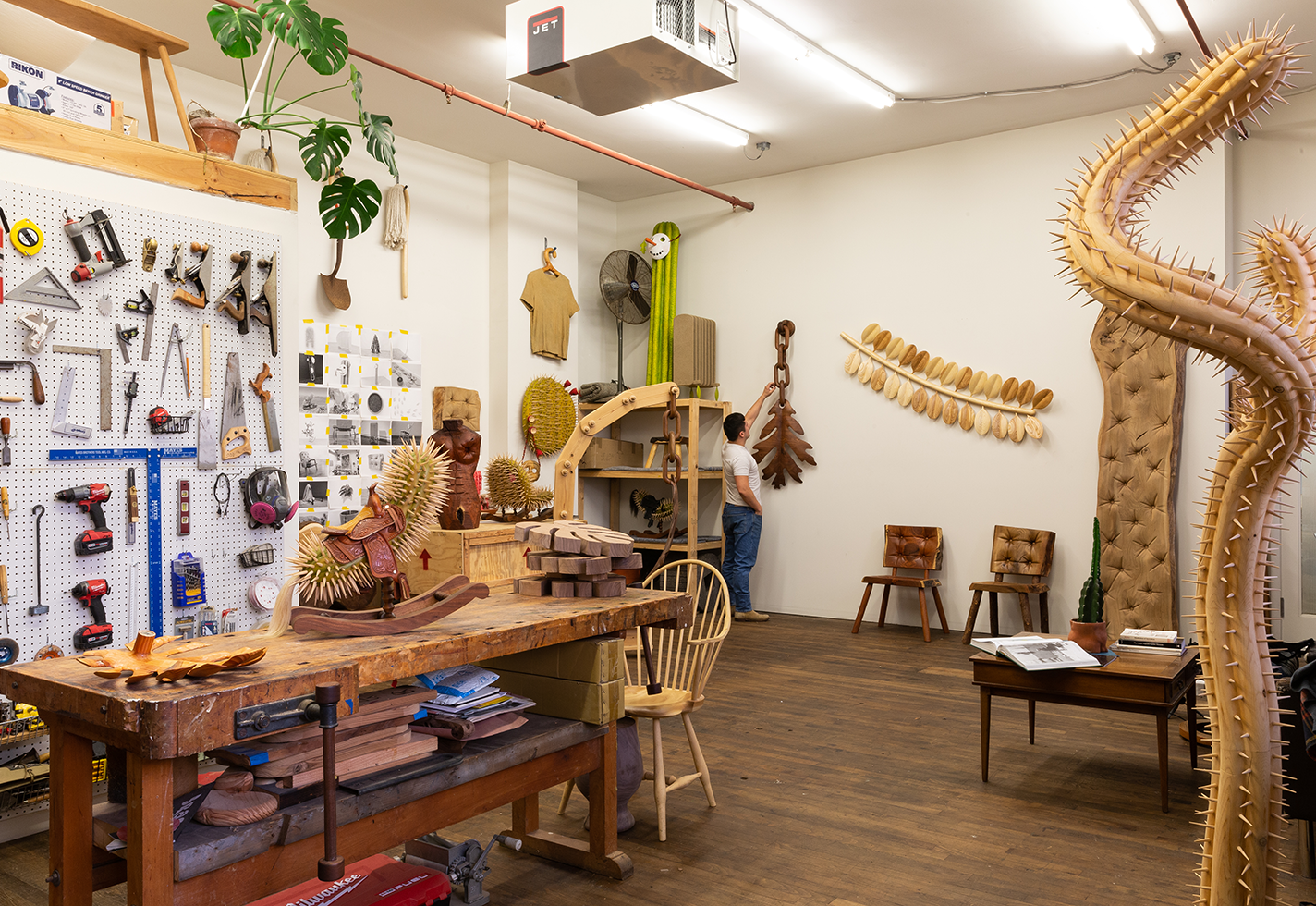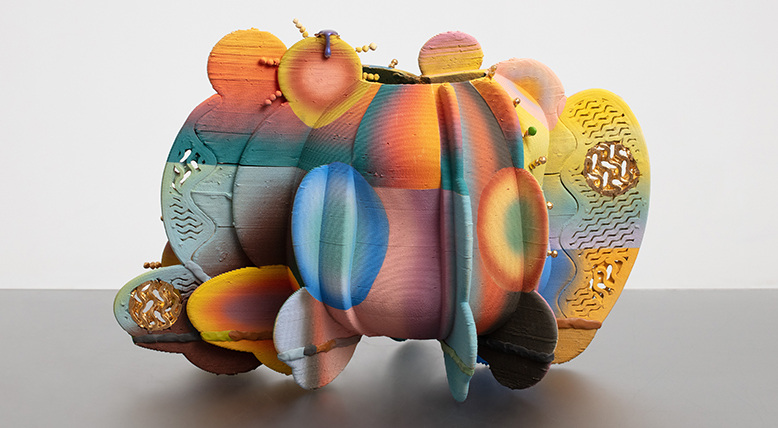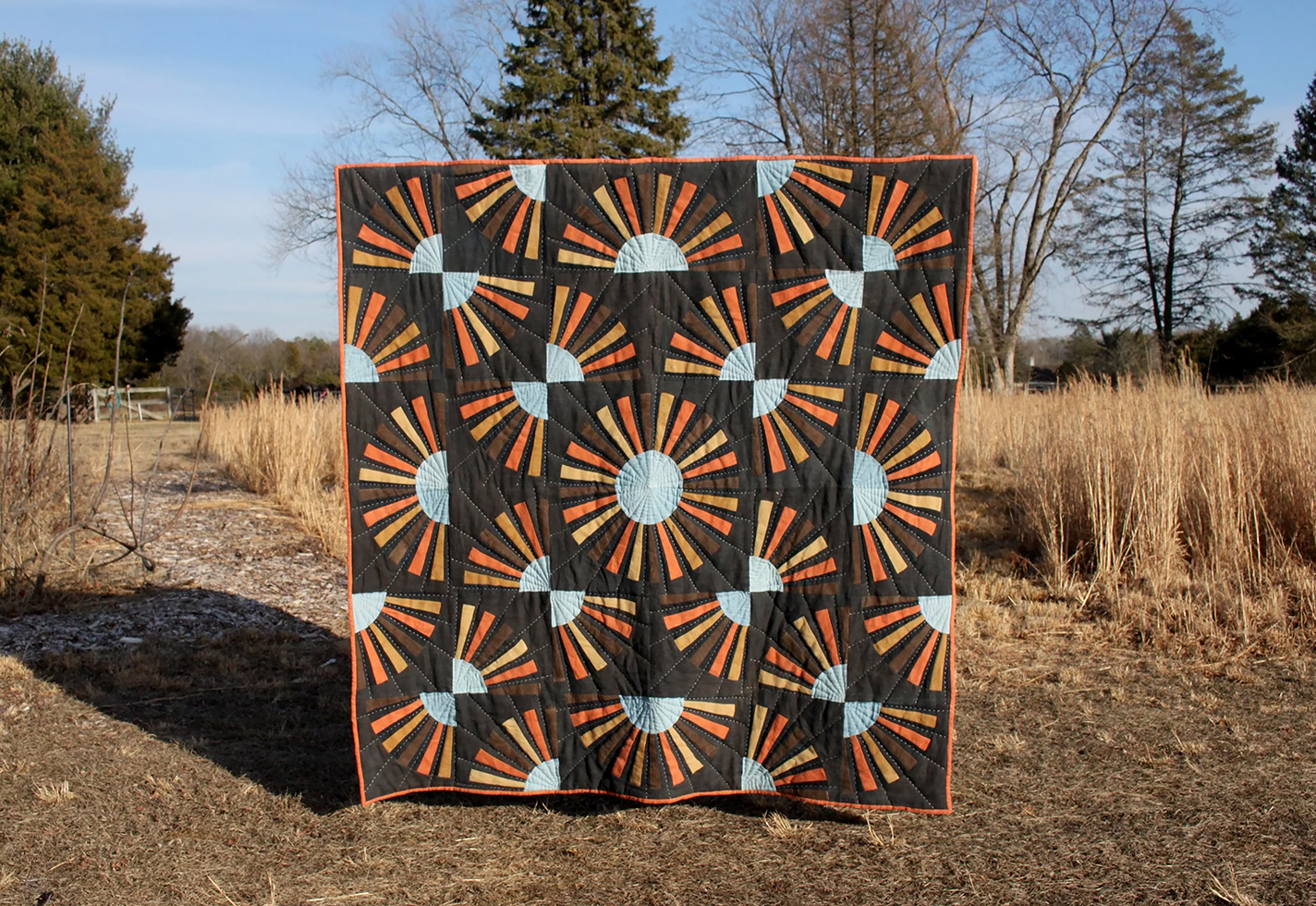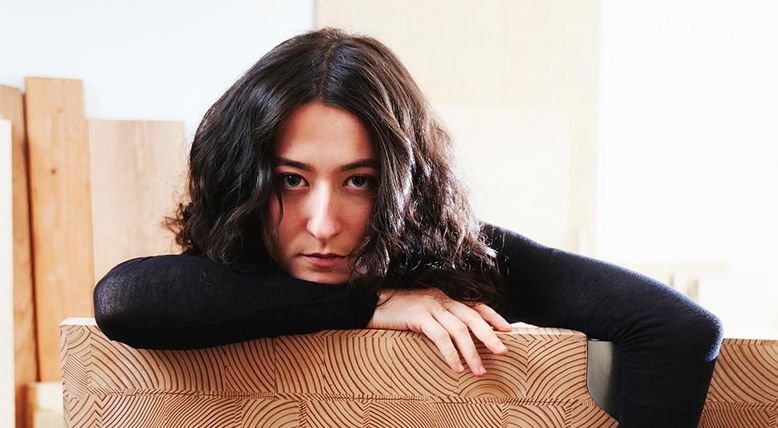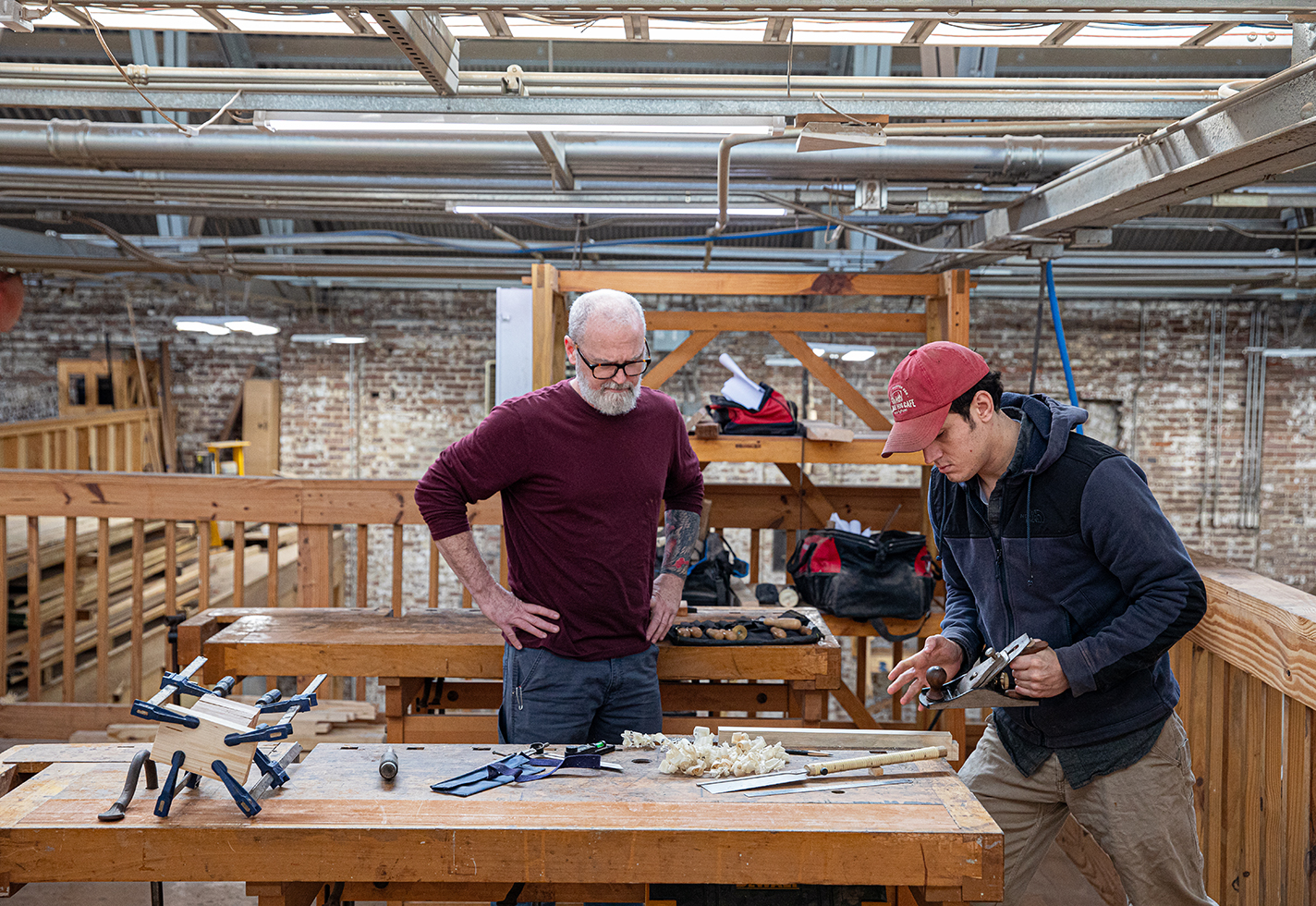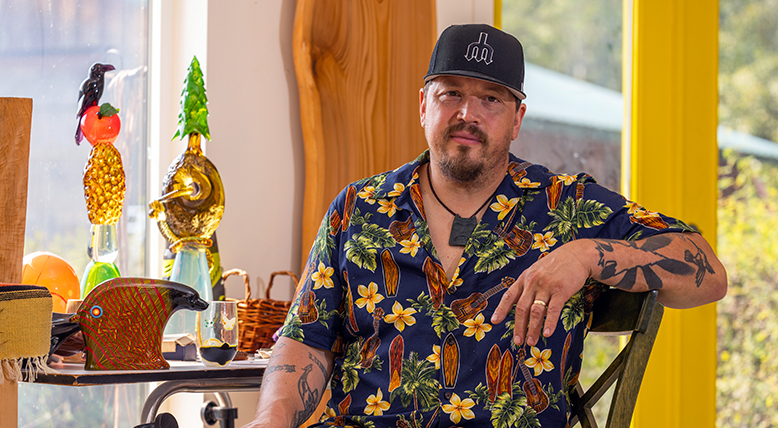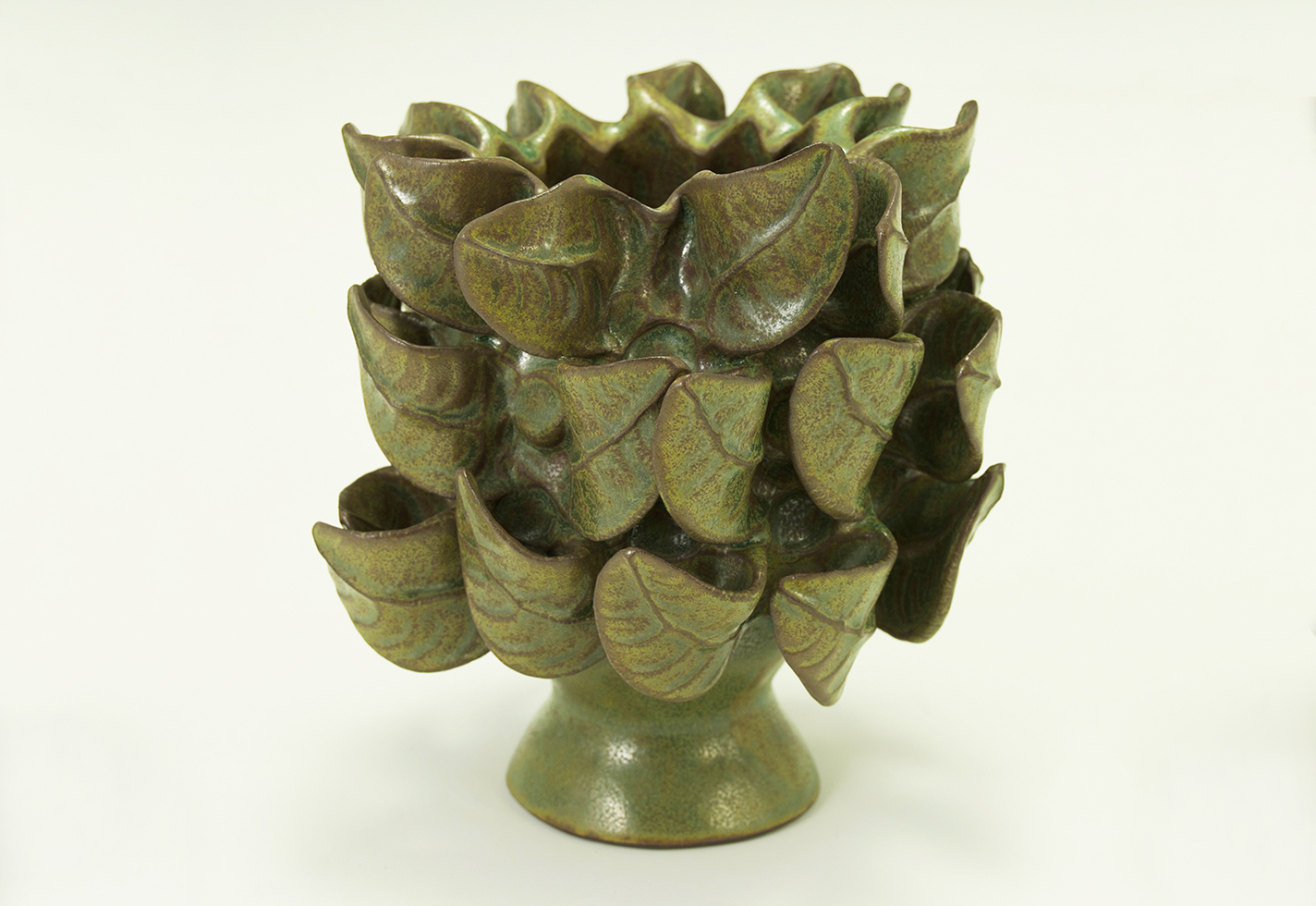New York–based woodworker Raul De Lara has been busy lately.
He has sculpted wood into a fascinating body of work, populated by spiky cacti moonlighting as chairs, larger-than-life plants made from hardwoods, and droopy, unusable tools. De Lara’s delightfully off-kilter sculptures will appear in four museum shows this year, including a solo show, Raíces/Roots, at the SCAD Museum of Art, on view until July 6. Last year, he won a Maxwell/Hanrahan Award in Craft and was a distinguished fellow at Penland School of Craft. De Lara traces his fascination with wood to his upbringing in Mexico, where his architect father and interior designer mother instilled in him the value of the material. “From a young age, they taught me that materials, objects, and spaces hold energy, and how this energy can be utilized to create beautiful things if one is patient enough,” he says. American Craft contributing editor Jennifer Vogel profiled De Lara in “Deep in the Wood” in our Spring 2025 issue, on sale now.
How do you describe your work or practice in 50 words or less?
My work explores the emotive and storytelling qualities of materials. I give feelings a shape. Working with humor, magical realism, and the uncanny, I create sculptures that often reflect on my experience as an immigrant and queer person. Wood is my primary medium, and I strive to honor generational knowledge.
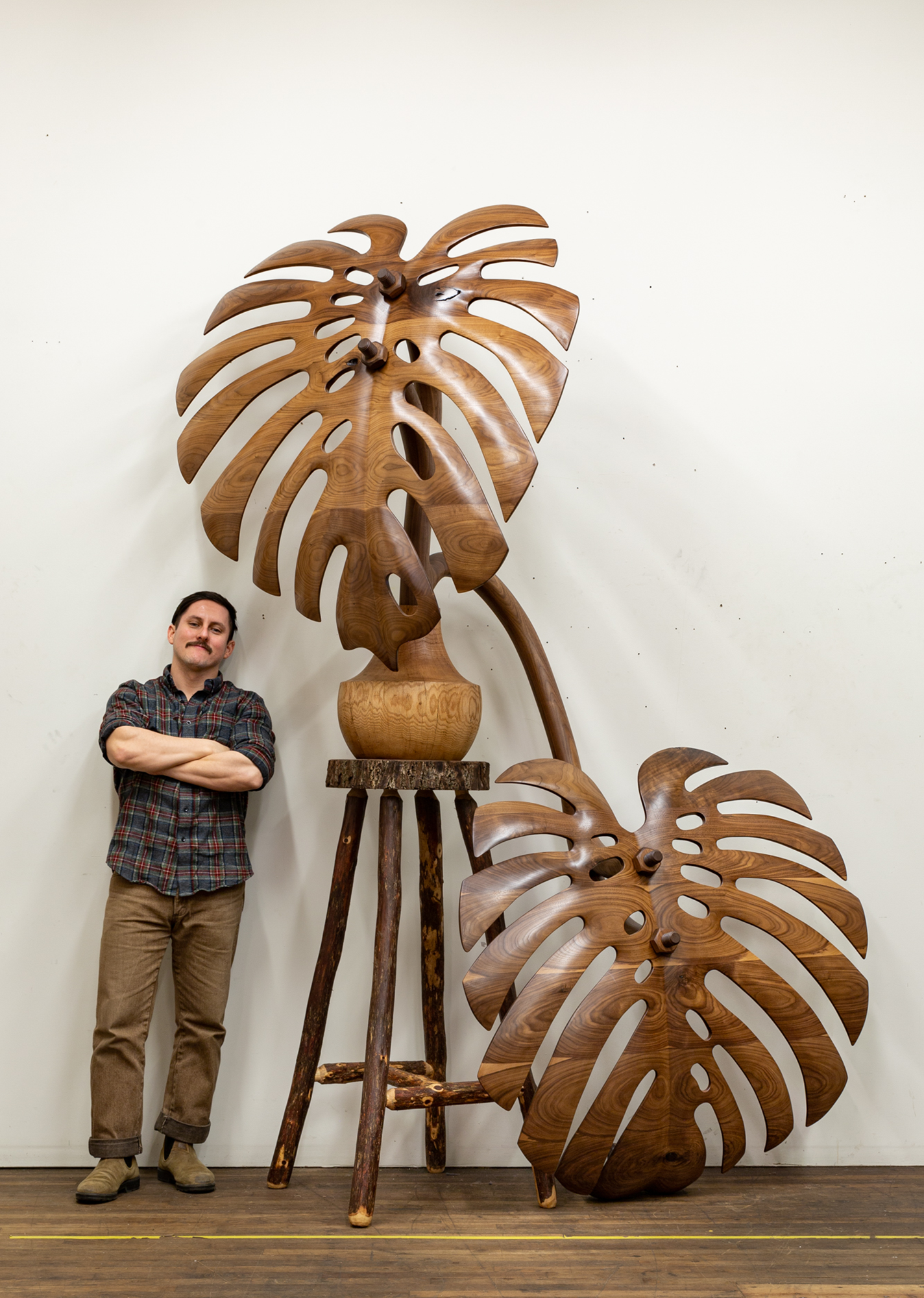
De Lara poses with Like the Ones Back Home / Como Las De Mi Tierra, 2024, walnut, oak, cedar, 108 x 84 x 36 in.
